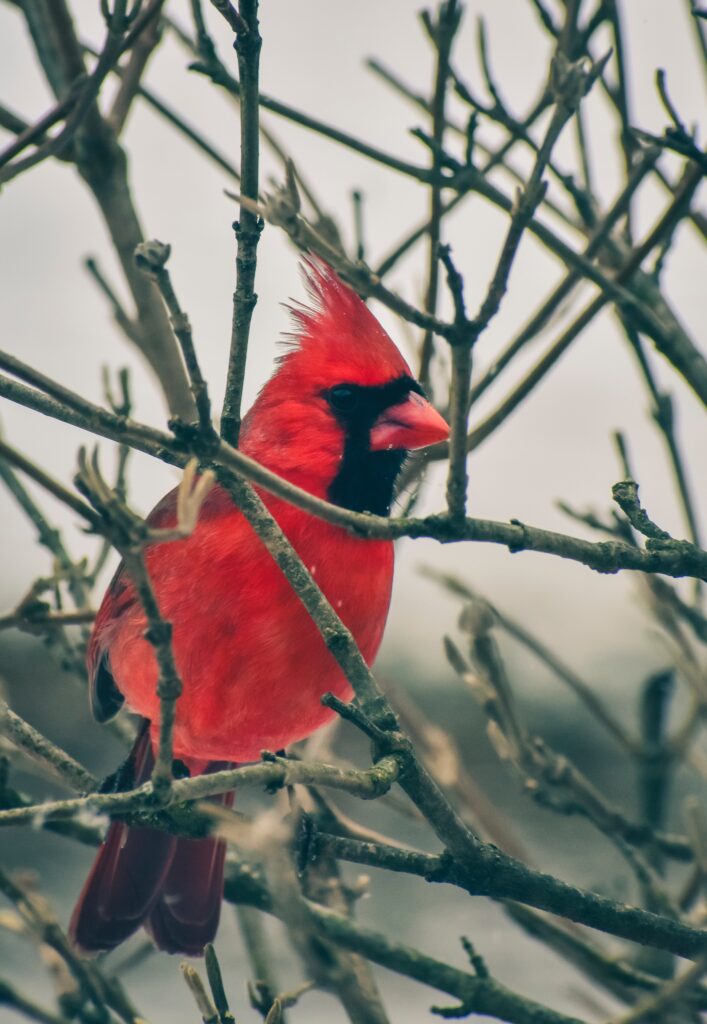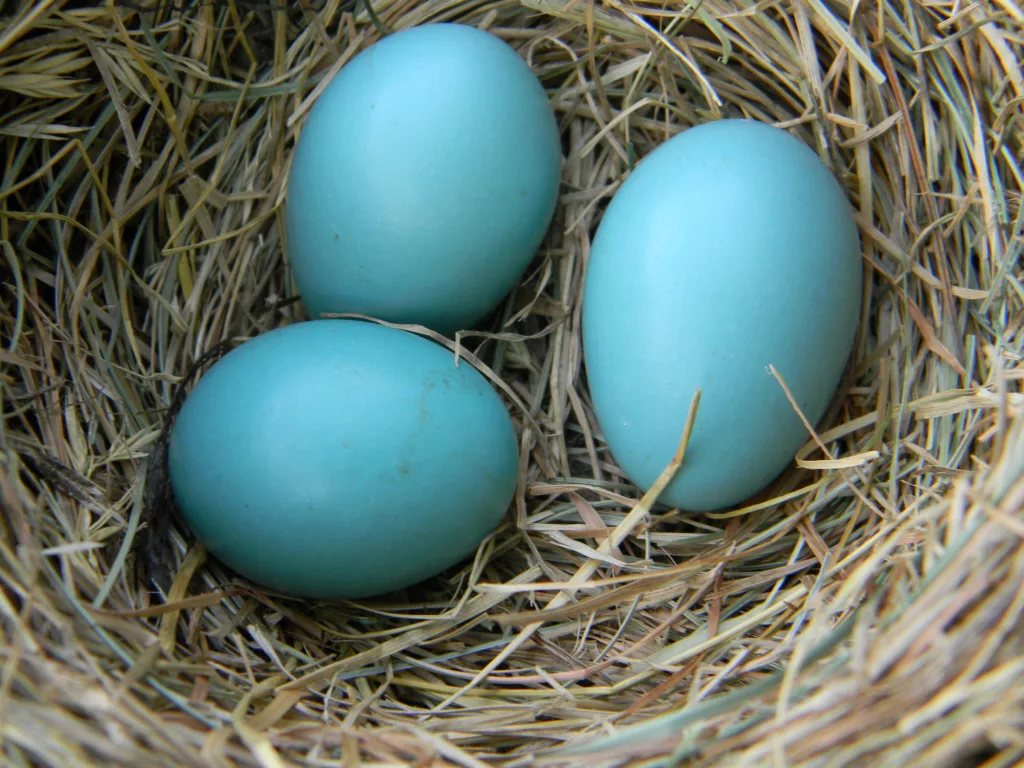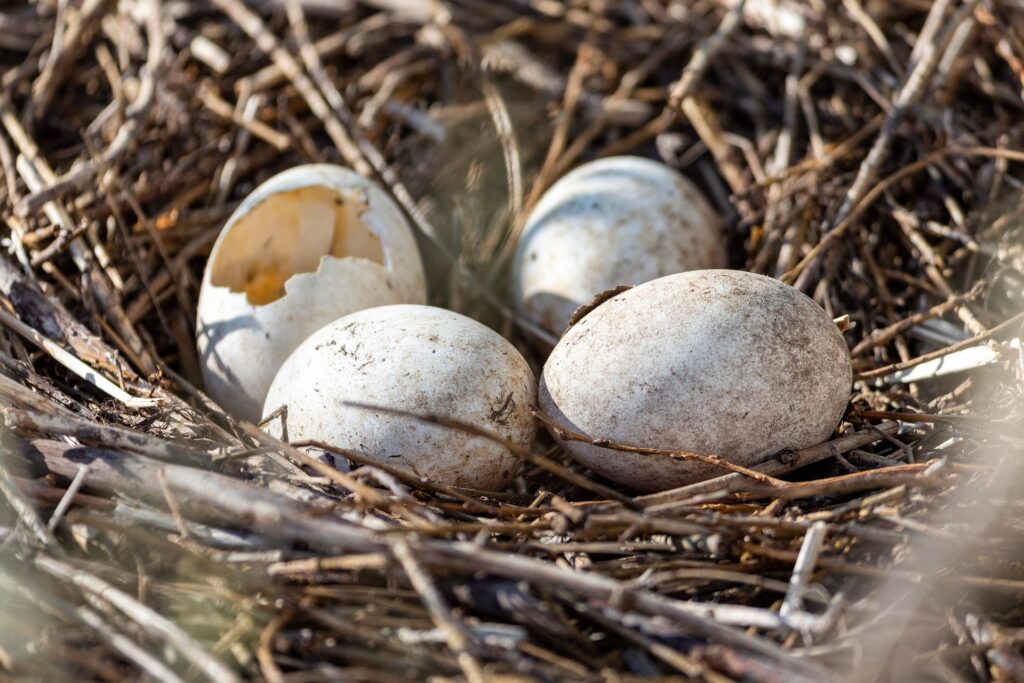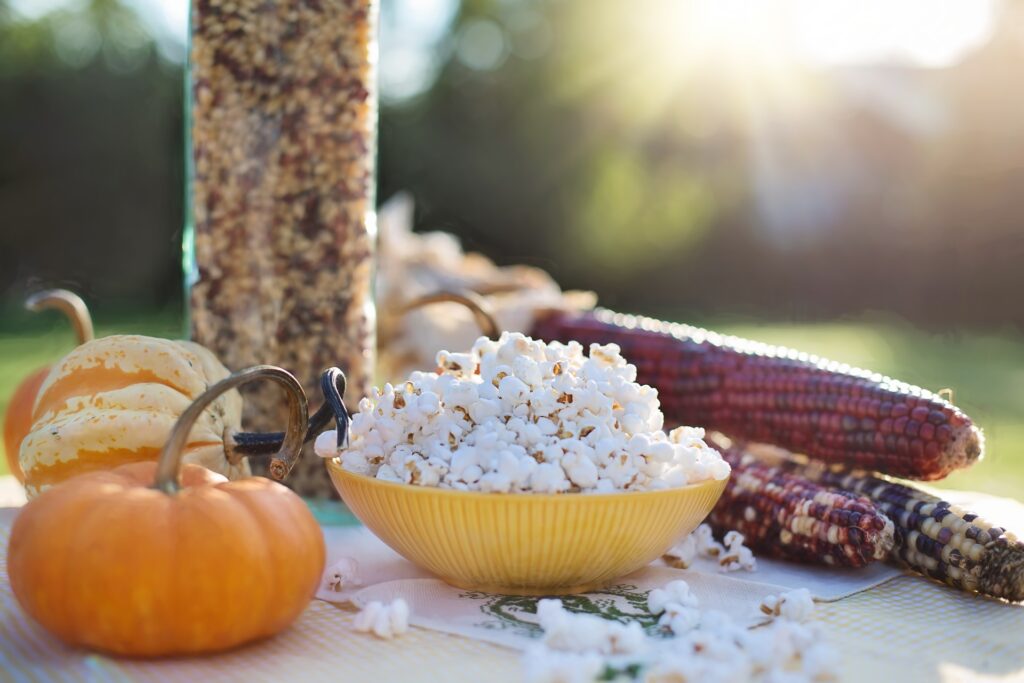
When we hear “peacock,” our minds instantly conjure images of vibrant feathers and majestic tail displays. But what about the other half of this avian duo, the peahens(female peacocks)? Far from the spotlight, these females carry a quiet grace that's often overshadowed by their male counterparts' flamboyance. But make no mistake, peahens are just as fascinating and integral to the tapestry of nature as the peacocks are.
Today, we're taking a detour from the usual peacock fanfare to shine a light on these graceful creatures. Peahens may not boast the kaleidoscopic trains that make peacocks the center of attention, but their subtlety, behavior, and roles within their habitats and families are nothing short of remarkable. So, let's embark on a journey to unveil the mysteries of peahens, exploring their lives, loves, and the pivotal roles they play in the avian world. Join me in discovering why these birds are every bit as deserving of our admiration and attention.
Table of Contents
ToggleUnderstanding Peahens(Female peacocks)

When we step away from the peacock's dazzling display, a subtler beauty emerges in the form of the peahen. These creatures, while not as visually striking, hold their own unique charm and play critical roles in the life cycle of their species. Let's delve into the world of peahens, from their physical characteristics to their behaviors and communication methods.
Physical Characteristics
Peahens, the female counterparts to the peacock, exhibit a more understated elegance. Their feathers are primarily brown or green, lacking the iridescent blues and greens of the males. Instead of the spectacular tail, or “train,” peahens have shorter, more practical plumage that blends into their surroundings—a perfect camouflage against predators. They are slightly smaller than peacocks, with a more streamlined silhouette, making them agile and adept at navigating their environment.
Behavioral Traits
Peahens(female peacocks) are social birds but tend to be more reserved and cautious than their male counterparts. They often form small groups, or “harems,” led by a dominant peacock. In these groups, peahens share responsibilities such as foraging and looking out for predators. Their social structure is complex, with hierarchies that influence mating choices and nesting sites.
Nesting is a solitary affair for a peahen. She carefully selects a secluded spot on the ground to lay her eggs, usually hidden in tall grass or underbrush. The peahen is a devoted mother, incubating her eggs for about 28 days and fiercely protecting her chicks from predators once they hatch.
Communication
Communication among peahens, and between peahens and peacocks, is vital for their survival and social structure. Peahens have a variety of calls and sounds to signal danger, call their chicks, or communicate with other members of their group. Their vocalizations can be surprisingly loud and varied, from high-pitched meows to deep honks.
Peahens also use body language as a form of communication, especially during the breeding season. While they may not have the elaborate tail feathers of peacocks to display, peahens express interest or disinterest through their posture, movements, and the positioning of their tail feathers.
The Role of Peahens(female peacocks) in Their Habitat
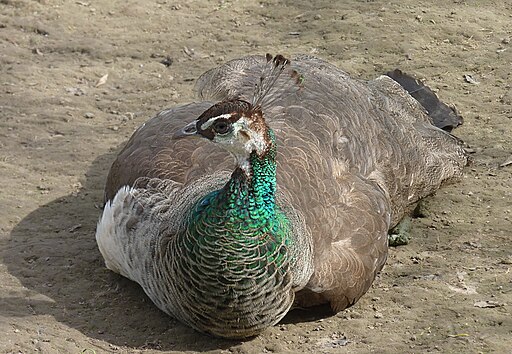
Diving deeper into the world of peahens, it becomes evident that their contributions to their habitats are both vital and multifaceted. Beyond their subdued appearance and behaviors lie important ecological roles that ensure the health and continuity of their environments. Let's explore the habitats peahens call home and the significant roles they play within these ecosystems.
Habitat Overview
Peahens are adaptable birds that thrive in a variety of environments, although they show a preference for forested areas, including deciduous forests and dense jungles. They are also found in grasslands and even areas close to human settlements, where they can find ample food and shelter. These habitats provide peahens with the necessary resources for nesting, feeding, and raising their chicks. The diversity of their habitats underscores the peahen's adaptability and resilience in the face of changing environments.
Contribution to the Ecosystem
Peahens play several critical roles in their ecosystems, contributing to the balance and health of their habitats in ways that often go unnoticed. Here are two key areas where peahens make a significant impact:
- Seed Dispersal: Peahens are omnivores, with a diet that includes seeds, insects, and small animals. As they forage, they inadvertently participate in seed dispersal, helping to maintain plant diversity and health in their habitats. This activity is crucial for the regeneration of plant life, contributing to the sustainability of their ecosystems.
- Prey and Predator Dynamics: Peahens are part of the food chain, both as predators and prey. By feeding on insects and small animals, they help control the populations of these species, preventing overpopulation and the potential for disease spread. Conversely, as prey for larger animals, peahens contribute to the health of predator populations, ensuring a balanced and dynamic ecosystem.
Peahens(female peacocks) also play a role in attracting ecotourism, which can be a double-edged sword. On one hand, increased human interest can lead to conservation efforts and protected areas for their habitats. On the other hand, it can also lead to habitat disturbance if not managed responsibly. Thus, understanding and respecting the natural behaviors and environments of peahens is crucial for their preservation and the health of their ecosystems.
The Mating Rituals of Peahens(female peacocks)

When the topic of mating rituals in the peacock species arises, the conversation often centers on the peacock’s extravagant tail display. However, the peahen plays a far more critical and discerning role in these rituals than commonly acknowledged. This section will delve into the subtleties of peahen choice, their selectivity in mate selection, and their integral role in rearing offspring.
Choice and Selectivity
Unlike the vivid display of peacocks, peahens adopt a more understated approach to mate selection, embodying the role of the critical observer. Their choice is not merely passive; instead, peahens actively assess potential mates based on a variety of factors. It’s a common misconception that peahens are solely attracted to the size and brightness of a peacock’s tail. While these attributes play a role, research suggests that peahens also consider other factors such as the vibrancy of colors, the symmetry of the tail, and even the peacock’s behavior and overall health.
This selectivity ensures that only the fittest and most genetically viable males pass on their genes, a process that strengthens the species over generations. Peahens spend considerable time observing potential mates, often watching several males display at once before making a choice. This discerning selection process underscores the peahen’s critical role in the natural selection dynamics of their species.
Rearing Offspring
Once a mate is chosen, the peahen’s role shifts to nurturing and protecting her young. After mating, the peahen lays a clutch of eggs, which she incubates for about 28 days. This period marks the beginning of her intensive investment in the next generation, as she fiercely guards her nest against predators and ensures the optimal conditions for her eggs to hatch.
Upon hatching, the peahen's focus turns to teaching her chicks how to forage for food and navigate their environment. Peahen chicks are precocial, meaning they are relatively mature and mobile from the moment of hatching. Despite their early independence, they remain under the vigilant care of their mother for several months, relying on her for protection and guidance.
The rearing of offspring is a critical period during which the peahen imparts essential survival skills to her chicks. This process not only ensures the immediate survival of her offspring but also the long-term viability of the species. The peahen’s role in nurturing and teaching her young highlights her essential contribution to the continuation and health of the peacock species.
Section 4: Conservation Status and Challenges
As we delve deeper into the world of peahens, it's crucial to address the conservation status and the challenges these magnificent birds face. Despite their resilience and adaptability, peahens, like many wildlife species, are not immune to the pressures of habitat loss, poaching, and environmental changes. This section will explore the current conservation status of peahens, the threats they encounter, and the efforts being made to ensure their survival.
Current Conservation Status
Peahens, along with peacocks, belong to the species collectively known as peafowl. The most well-known species, the Indian Peafowl (Pavo cristatus), is listed as “Least Concern” by the International Union for Conservation of Nature (IUCN), indicating that it is not currently at immediate risk of extinction. However, this status should not lead to complacency, as local populations can face significant threats from human activities and environmental changes. Other species of peafowl, such as the Green Peafowl (Pavo muticus), have been classified as “Endangered,” highlighting the urgent need for conservation action to protect these birds and their habitats.
Threats to Peahens(female peacocks)
- Habitat Loss and Degradation: The expansion of agricultural land, deforestation for timber and urban development, and the degradation of natural habitats pose significant threats to peahens. These activities not only reduce the available space for peahens to live and breed but also fragment their habitats, making it harder for them to find food, mates, and nesting sites.
- Poaching and Illegal Trade: Peahens and peacocks are often targeted by poachers for their meat and feathers. The illegal trade in peafowl feathers, despite being banned in many countries, continues to be a problem, contributing to the decline in their populations.
- Pesticides and Chemicals: The use of pesticides and chemicals in agriculture can have detrimental effects on peahens, either through direct poisoning or through the reduction in the availability of their insect prey.
Conservation Efforts
Conservation efforts for peahens and peacocks are multifaceted, involving habitat protection, legal enforcement against poaching and illegal trade, and community engagement to promote coexistence with these birds. Protected areas and wildlife reserves play a crucial role in providing safe havens for peahens, where they can live, breed, and raise their young without the immediate threats posed by human encroachment.
Education and awareness campaigns are equally important, as they help to build local and global support for peafowl conservation. By educating the public about the importance of peahens in the ecosystem and the threats they face, conservation organizations aim to foster a sense of stewardship and encourage actions that contribute to the preservation of these birds.
6 Fascinating Facts About Peahens

Peahens often fly under the radar, overshadowed by the peacock's vibrant plumage and elaborate displays. However, these birds harbor their own set of intriguing characteristics and behaviors that deserve the spotlight. This section is dedicated to shedding light on some of the most fascinating facts about peahens, aiming to deepen our appreciation for these less celebrated but equally remarkable members of the peafowl family.
1. Peahens(female peacocks) Have Excellent Camouflage
Unlike the peacock's flashy tail, a peahen's plumage is designed for camouflage. Their muted brown and green feathers blend seamlessly into their natural surroundings, providing them with a crucial advantage against predators. This natural disguise allows peahens to protect themselves and their chicks, especially when nesting on the ground.
2. They Play a Key Role in Mate Selection
Peahens(female peacocks) are the ultimate decision-makers when it comes to the peafowl mating process. Their choices influence not only the immediate breeding success of peacocks but also the genetic direction of their offspring. By selecting mates based on specific traits, peahens indirectly shape the evolutionary path of their species.
3. Peahens(female peacocks) are Social but Independent
While peahens can often be seen in groups, they exhibit a strong sense of independence. They are capable of foraging, nesting, and raising their chicks without the assistance of a male. This independence is a testament to their resilience and adaptability in various environments.
4. Vocal Communication is Complex
Peahens(female peacocks) possess a range of vocalizations used to communicate with peacocks, their chicks, and other peahens. These calls serve multiple purposes, including signaling danger, coordinating social interactions, and facilitating mother-chick bonding. The complexity of their vocal communication is a fascinating aspect of their behavior that underscores their social intelligence.
5. Peahens(female peacocks) are Attentive Mothers
The maternal instinct of peahens is remarkably strong. From selecting a safe and secluded nesting site to fiercely protecting their chicks from predators, peahens demonstrate an unwavering commitment to their offspring. This dedication ensures the survival of the next generation of peafowl.
6. They Have a Surprisingly Long Lifespan
In the wild, peahens can live up to 15-20 years, a testament to their resilience and adaptability. Under human care, their lifespan can extend even further, with some individuals reaching over 20 years of age. This longevity allows peahens to contribute significantly to the genetic diversity and stability of their populations over time.
Conclusion
As we wrap up our exploration into the enchanting world of peahens, it's clear that these birds are far more than just the understated counterparts to their male peers. Through our journey, we've uncovered the subtle beauty, intricate behaviors, and vital ecological roles of peahens, showcasing their importance in nature's grand tapestry. From their selective mating rituals and devoted motherhood to their significant contributions to ecosystem health and biodiversity, peahens exemplify the beauty of nature's diversity and complexity.
Peahens(female peacocks), with their keen survival skills, serve as a reminder of the delicate balance within ecosystems and the interconnectedness of all living beings. Their ability to blend into their surroundings, combined with their social structures and communication methods, highlights the sophistication of avian life. Moreover, the challenges they face remind us of our responsibility to protect these magnificent creatures and their habitats for future generations.
In drawing attention to the often-overlooked peahens, we hope to spark a renewed interest and appreciation for all aspects of the natural world, especially those that don't immediately catch our eye. It's a call to look beyond the obvious and discover the hidden wonders that surround us, encouraging us to learn from and protect these incredible birds.
Call to Action
Let this exploration of peahens inspire you to take a closer look at the natural world around you. Whether it's supporting conservation efforts, visiting bird sanctuaries, or simply sharing the fascinating story of peahens with others, every action counts. Together, we can contribute to a future where the beauty and diversity of all creatures, no matter how inconspicuous, are valued and preserved.
As we conclude, remember that the grace and resilience of peahens are emblematic of nature's wonders. By appreciating and protecting them, we nurture a deeper connection with the natural world, ensuring its vibrancy and health for generations to come. Let's carry forward the message of conservation and curiosity, making the world a better place for peahens and all wildlife.

